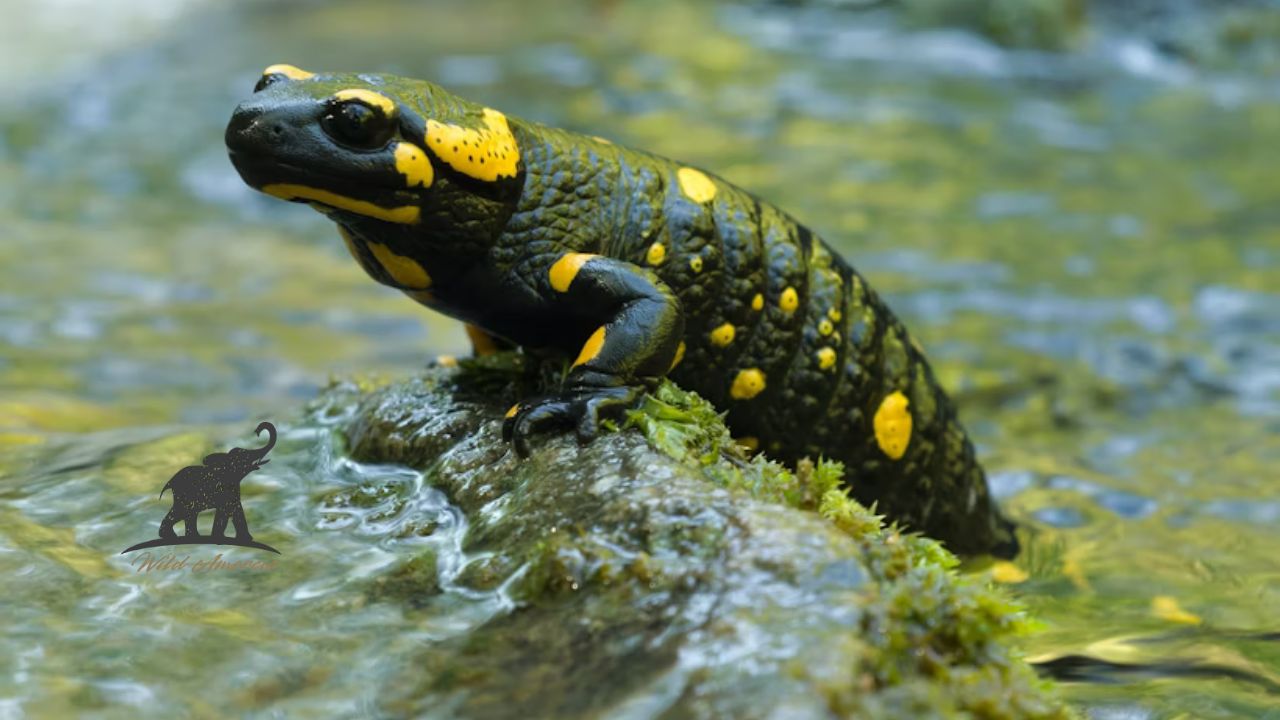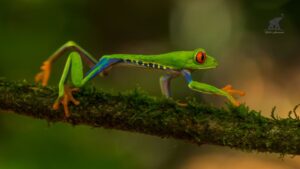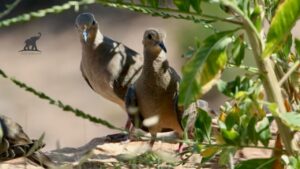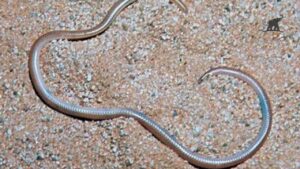Spotted salamanders are charming animals that hypnotize the minds of researchers and nature enthusiasts alike. These amphibians with their black body and bright yellow spots on their sleek are a striking sight in North American forests. They are well known by their secretive as well as nighttime habits. Furthermore, they appear mostly during rainy-nights. This article will explore each and everything about the world of spotted salamanders, including their distinctive features, habitat and behavior that make them so captivating.
Some basic facts about spotted salamanders
| Feature | Details |
| Scientific Name | Ambystoma maculatum |
| Family | Ambystomatidae |
| Habitat | vernal pools Deciduous forests, wetlands |
| Lifespan | Maximum 20 years |
| Diet | Carnivorous |
| Distinct Features | Black body with two rows of yellow or orange spots |
| Size in cm | 15- 25 |
| Conservation Status | Least Concern |
The Marvels of Spotted Salamanders
The Striking Appearance
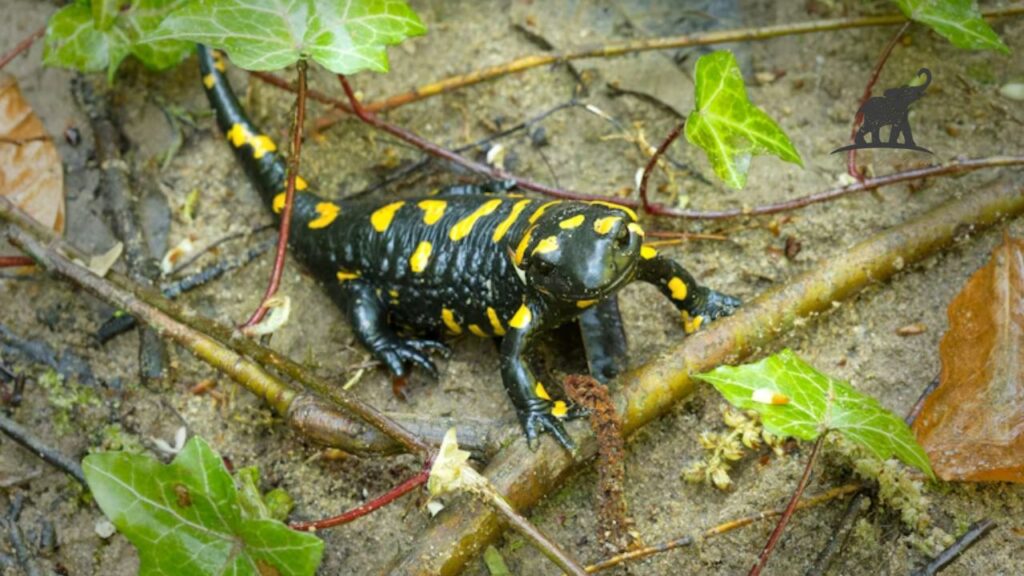
Spotted salamanders are can be identified easily by their shiny black bodies adorned with orange or yellow spots running down their backs. These charming spots are not just a source of decoration; they act as warning signals for predators, and taste the unpleasant signals and even are mildly toxic when threatened. The distinctive coloration varies somewhat between individuals, just like the fingerprints in humans.
Habitat and Distribution
Undeniably, spotted salamanders are found in the range of eastern to central parts of North America. They live in moist deciduous forests where they can easily burrow in the soil. Interestingly, these salamanders depend on vernal pools and seasonal water bodies for breeding.
Furtive Behavior Forms
Nocturnal Lifestyle
Mostly they hunt and mate at night; and hide themselves in the day time. They are specifically active after rainy weather, which fulfill their moisture requirements.
Beatlar Lifestyle Blog – Your destination for creativity, inspiration, and practical living tips. Visit beatlar.com today.
Breeding Rituals
Spotted salamanders present the “explosive breeding” event during the early spring rains and they make their head towards the vernal pools for said event. Males and females engaged themselves in large groups and perform courtship dance. Females attaches themselves with submerged plats and lay hundreds of eggs.
Longevity and Survival
In the wild, spotted salamanders can survive up to 20 years. Peaceful environment and breeding pond are crucial to their age determining. Unfortunately, habitat destruction is a major threat to this beautiful creature.
Relatives of Spotted Salamanders You Should Know About
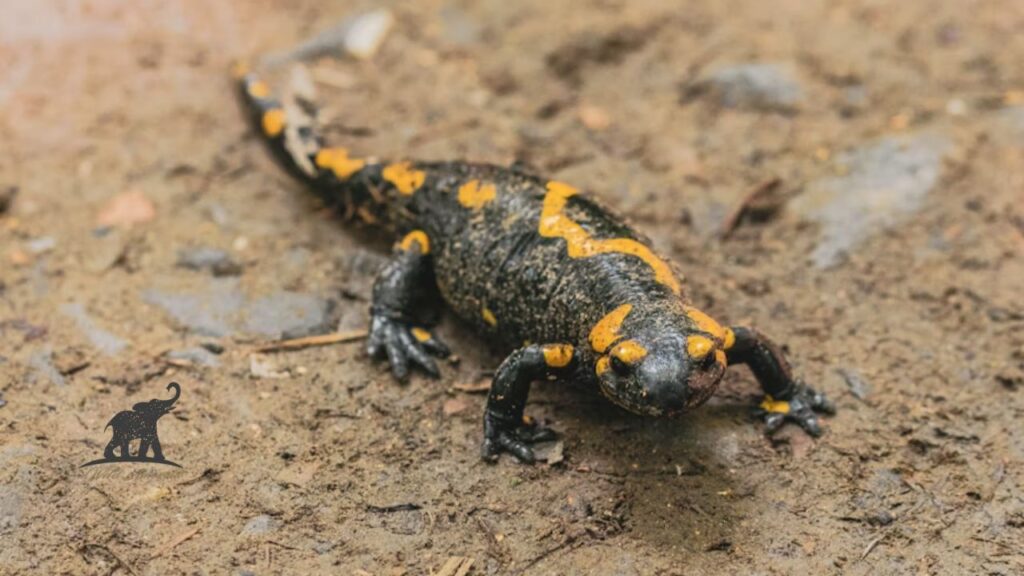
Even though they are remarkable, there are other colorful salamanders in the family. Some of their relatives are worth mentioning:
- Blue-Spotted Salamander
This species’s black skin is flecked with bright blue spots, and it lives in similar environments.
- Yellow-Spotted Salamander
Due to similar patterns, the yellow-spotted salamander and its spotted cousin are frequently misidentified. On the other hand, it has distinct spot arrangements and colors that are slightly brighter.
- White-Spotted Salamander
The body of this rare species is black with striking white markings. It’s less common but equally fascinating.
- Black-Spotted Salamander
They have sporadic black spots on their darker body; these salamanders have delicate beauty that attracts the enthusiasts.
Why Do People Love Spotted Salamanders?
Captivating Reviews from Nature Enthusiasts
Wildlife enthusiast and herpetology lovers has special place in their hearts for spotted salamanders:
- “Under the moonlight, spotting a spotted salamander is like finding a buried treasure!” review from a wildlife photographer.
- “They are so charming due to their shy nature and vibrant spots. My kids were fascinated!” review from a family exploring a national park.
These reviews reflect the awe and joy that these charming creatures inspire in those lucky enough to encounter them.
Benefits to the Ecosystem
Spotted salamanders control the insect population in their ecosystem; in this way they manage the overall ecosystem productivity. They include insects like mosquitoes in their food, which helps humans indirectly. They also help to maintain equilibrium in the food chain by acting as prey for larger animals.
FAQs About Spotted Salamanders
Are spotted salamanders poisonous?
While not deadly, these species secrete mildly toxic venom. This venom is harmless to humans.
Do spotted salamanders make good pets?
Spotted salamanders require great care when you kept as pet.
What type of animals are source of feed for spotted salamanders?
- Slugs ii. Earthworm iii. Insects, IV. Small invertebrates.
How I can contribute to conserve spotted salamanders?
- Through wetland protection
- Habitat preservation.
Are they endangered?
They are categorized as “Least Concern.”
Conclusion
Spotted salamanders are not only beautiful amphibians; they are dynamic contributors to their ecosystems and good showpiece of nature’s complexity. Whether you’re observing them in the wild or learning about their unique traits, these creatures are a testament to the hidden wonders of our natural world. The next time you find yourself in a quiet forest on a rainy evening, keep an eye out – you just might spot one of these elusive gems.
Admin Recommendation
Cottonmouth Snakes in North Carolina (NC): Key Facts
The Fascinating World of Arctic Fox Fur
Experience the Majesty of Elk and Bison Prairie, KY
Cottonmouth Snakes in North Carolina (NC): Key Facts
Bald Eagle Spiritual Meaning: A Guide to Symbolism and Significance
The Appealing Charm of Ragdoll Kittens
Where to Find Arctic Fox Fur in AC Valhalla
The Barbados Threadsnake: Unveiling the World’s Smallest Snake
American Eskimo Dog: A Comprehensive Guide to This Charming Breed

